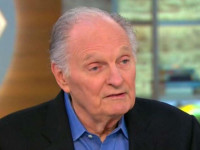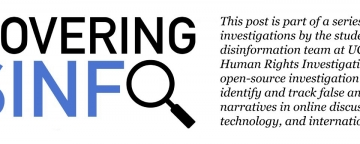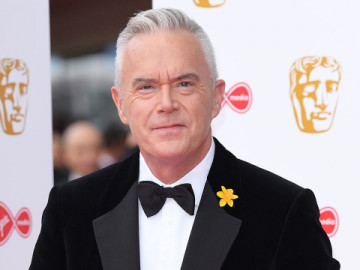
General Introduction
2017 was a surreal year. Just when we think things can’t get any worse, lo and behold, a new tweet comes out. Or a new policy is introduced. Or a new world leader is so offended that we get closer to doomsday. Trump’s election has normalized and publicized the proverbial anonymous yahoo comments, and it’s hard to imagine that he still has a small but loud base of support and that people chose this narcissistic, sexist, racist sociopath consciously. He has exemplified our slow, subtle transformation from intelligent citizens to mindless consumers to salivating spectators who have a constant need for entertainment and outrage.
I always said that when voting for president, what we’re really voting for was the Supreme Court. I am going on record to say that I was wrong. Dead wrong. Trump has proven beyond a shadow of a doubt that there are so many ways a president can be harmful other than by Supreme Court appointments. To be sure, judicial appointments are one major way that Trump is detrimental to the country, and it will take at least a generation to recover from those appointments alone. But this document shows that a president can do deep and lasting damage in many ways.
Although I vacillate between disgust and defeat and anger, I am trying very hard to channel all of those feelings into fighting against our spiral toward Idiocracy. The only way to do this is for everyone who is eligible to actually get out and vote in every single election. This November’s midterm elections will tell us if Americans are really ready for progress or if they’re apathetic enough to continue our moral, ethical, and constitutional decline.
There have been several year-end round-ups about Trump’s first year. Many of them are laughably revisionist. But there were some informative ones. Axios created a great chart of search trends for some of the biggest news events of the first year, showing how we’ve all jumped from one four-alarm news fire to another. Rolling Stone summarized the damage of Trump’s first year. And Roger Cohen with the New York Times editorialized our frightening reality in If This is America.
This piece is meant to be a comprehensive assessment of the impacts of Trump’s first year as President of the United States of America (let that sink in). There are many things that happened during the campaign that are not included. Included are impacts from January 20, 2017, to January 31, 2018 (in some cases, February 1). There are sure to be things missing, but I have done my best to record these impacts. The impacts are listed under 19 different categories:
1. Cabinet Appointments;
2. Science & Environment;
3. Women & Families;
4. LBGT;
5. Judicial/Constitutional;
6. Ethics;
7. Targeting free press/free speech/Privacy;
8. Health & Safety;
9. Consumer Protections;
10. Education;
11. Transportation/Infrastructure/Housing;
12. Immigration;
13. Social Contract;
14. Business/Economy/Budget;
15. General Governance;
16. Character;
17. Military/Defense/Police;
18. World; and
19. Some good news. Because there is always some good news.
Of course, some of the impacts may fit under multiple categories. For example, does Trump’s encouragement of police to treat suspects violently fall under Health and Safety or Law Enforcement? Or maybe Ethics or Character? There are many such conundrums, and I have tried to categorize each example appropriately. Some may disagree on the categorization. And that’s OK. As a researcher, I’m still pondering good ways to visualize all of this data, but in the meantime, it’s listed here. Fair warning: This is long. The items may not necessarily be in chronological order.
Since this will take me months to write, I will publish each section as I complete it. This is the 17th article and covers Trump’s impact on military and policing.
I want to acknowledge Amy Siskind’s weekly list of subtle changes that experts in authoritarianism say to watch out for. Amy’s in-depth listings were invaluable, and a must-read itself.
Buckle your seatbelts.

Military/Defense/Policing
Trump has significantly grown our military industrial complex, complete with filling the Department of Defense with defense industry executives. Even John McCain told Trump to stop nominating defense industry executives. Trump’s overall reckless behavior has led many to describe him as playing “nuclear poker” as he designs a roadmap to a new nuclear arms race. The military isn’t enough military for him, though, because he has moved forward in militarizing our police departments across the country. And with that, he is re-implementing “tough on crime” policies that have been overwhelmingly proven to be failed policies.
· After Trump declared that whistleblower protections should be stronger at the VA, whistleblower retaliation is actually growing.
· If that wasn’t enough for veterans, Trump signed an executive order to draft retired pilots back into military service for any reason.
· In the meantime, Trump declared (over Twitter, of course) that transgender people will no longer be able to serve in the military, even though the ban on transgender people was lifted a year prior. (So far, courts have blocked this ban.) The ban is expected to cost the military approximately $960 million.
· Transgender people aren’t the only qualified people who Trump wants out of the military. He also abruptly canceled enlistment contracts for hundreds of foreign-born military recruits with green cards who have “waited years to join a troubled recruitment program designed to attract highly skilled immigrants into the service in exchange for fast-track citizenship.”
· Trump is trying to expand the military even more by creating a new branch of Space Operations Force without Congressional approval.
· Trump also launched a strike on Syria without Congressional approval. The strike killed more than 80 civilians, including women and children.
· Trump also rolled back various limits on drone strikes and commando raids that President Obama put in place to increase vetting and limit civilian casualties.
· Perhaps because of that rollback, monthly US drone strikes quadrupled Under Trump, and the administration has only acknowledged 20 percent of its total reported drone strikes. In addition, the U.S. admitted to killing between 2,867 and 3,138 people in strikes conducted in countries like Pakistan, Somalia, and Yemen.
· Trump admitted that he did not sign off on an attack in Niger that killed four US soldiers. Instead, he abdicated his responsibility to generals.
· Under Trump, the U.S. Air Force is preparing to put nuclear-armed bombers back on 24-hour ready alert, a status not seen since the Cold War ended in 1991.
· The nuclear threat doesn’t stop there: The Pentagon has pushed for using nuclear weapons in retaliation for things like cyberattacks.
· For only the second time since 9/11, the American defense secretary didn’t visit U.S. troops in a war zone during December, breaking a long-standing tradition of personally and publicly thanking service members in combat who are separated from their families during the holiday season.
· Trump also signed the largest arms deal in American history with Saudi Arabia, which is expected to use some of the weapons in military intervention in Yemen where Saudi Arabia has already been accused of war crimes. Some have suggested that this arms deal makes the United States complicit in those war crimes and genocide by supplying the weapons.
· If one deal with human rights abusers wasn’t enough, Trump also lifted all human rights conditions on a major sale of F-16 fighter jets and other arms to Bahrain,
· In a continued blurring between military and local police and the continued militarization of police forces, Trump has made it easier for local police departments to get military equipment such as 18-ton vehicles that are designed to withstand bombs, bullets, mines, and grenades. And perhaps protesters. Trump’s executive order rolls back reforms by President Obama that banned police departments from having certain equipment and placed restrictions on others.
· He also told police officers nationwide to “not be too nice” and encouraged police officers to treat suspects violently. Perhaps this explains why police killings substantially increased since Trump took office?
· Even though crime rates are at historic lows, Trump continually lies about rates increasing and signed three “tough on crime” executive orders that essentially set up a path to enact tough criminal justice policies that have failed in the past.
· The attorney general revoked a memo from President Obama that directed federal prosecutors to use discretion when making decisions about charging drug cases. He replaced that memo with one ordering attorneys to charge the most serious offenses, which will lead to more and longer prison terms for drug offenses. He also withdrew another memo that deprioritized marijuana for prosecution in states where it’s been legalized. Some have seen this as a direct attack on “liberal” California.
· The attorney general also reversed President Obama’s policy on phasing out private prisons.
· But he’s not that serious about reducing crime. Trump’s DOJ targeted roll-backs for the Office of Community Oriented Policing Services (COPS Office) Collaborative Reform Initiative for Technical Assistance, which was intended to identify problems in police departments.
· Trump’s Department of Justice re-established a criminal asset seizure program that had been limited because of its ease of abuse of the system and violations of due process.
The next article will cover Trump’s impacts on the world and foreign affairs.




























Connect with us